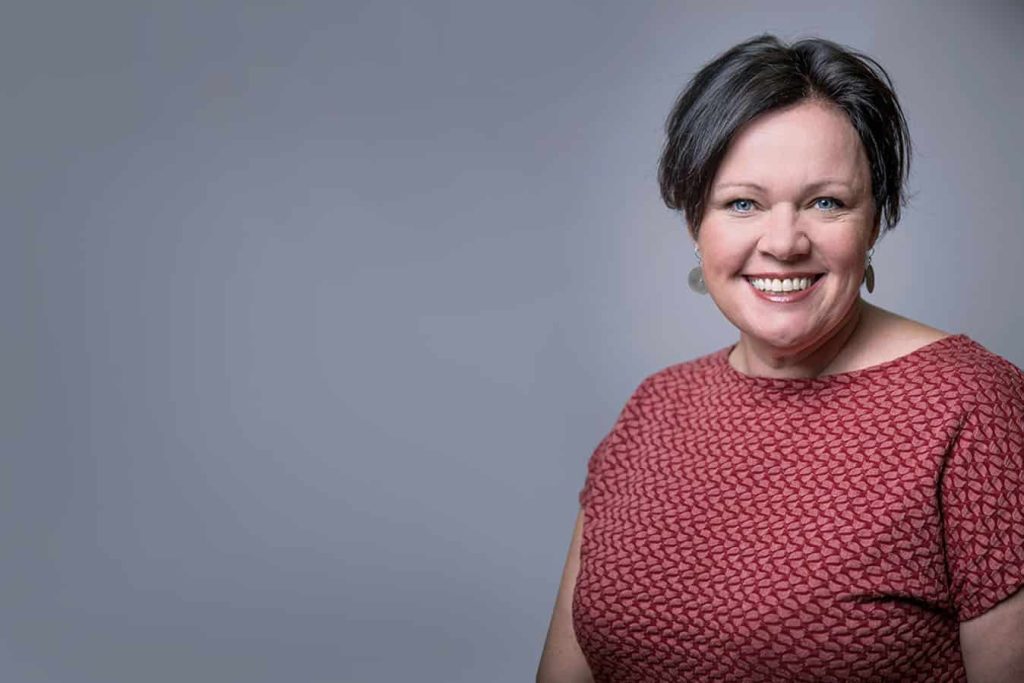Resignations of high profile women leaders last year have thrown the spotlight on the culture and gender disparity in Australian workplaces. Natalie Dragon talks to some prominent nurse leaders who are board members about their roles.
The disparity between men and women in leadership roles perpetuates existing stereotypes about the role of women, both at work and in wider society, and exacerbates gender pay inequity, according to the Australian Human Rights Commission. Research shows that having significant numbers of women in leadership positions encourages and sustains other women.
Corporate Australia’s female problem was highlighted last May when all four female directors of AMP resigned following revelations at the Banking Royal Commission.
Liberal backbencher Julia Banks, who left the party after tactics that toppled Malcolm Turnbull were played out, told Parliament that only gender quotas would work in politics. Only 17% of Liberal MPs are women compared to nearly half of all Labor MPs. The Victorian ALP re-elected last November announced women would constitute 50% of the front bench.
The number of women on the boards of ASX-listed companies grew from 8.3% in 2009 to 26.2% in 2017. ASX guidelines emphasise voluntary but transparent targets, there are no mandated quotas for gender diversity on boards.
Some countries, including France, Spain and Germany, have quotas for gender representation. Finland introduced 40% quota legislation in 2006; and Norway in 2008, where all listed companies must have corporate boards composed of at least 40% of each sex or face dissolution.
No one disputes it should be the best person for the job, the issue is whether there is unconscious bias against women in selection for the roles.
“We need to be proactive, personally I believe the setting of quotas to ensure equal female representation on boards is essential,” says ANMF Assistant Federal Secretary Lori-Anne Sharp. “It encourages companies to achieve gender diversity. A cultural shift is emerging that supports equal gender representation, but we still have a way to go.
“Women with the necessary qualifications should be encouraged to sit on boards and claim the same opportunities as their male counterparts. Women bring a unique set of skills, have understanding of the many social and financial factors impacting on communities such as caring responsibilities and challenges of family/work life balance. Equal gender representation gives a fair democratic process to the 50% of women that are representative of the adult population.”
Ms Sharp joined the HESTA Super Fund Board in July last year. A registered nurse for 25 years, with experience in community health, aged care and the acute sector, Ms Sharp has extensive industry experience. Her position on the ANMF Victorian Branch Council has given her firm grounding on governance.

“I have broad experience and understand the needs of members and their everyday lives, the challenges they face and the impact of the decisions we make.”
HESTA is embedded in the community services and health sector and is particularly focused on all its members having a dignified retirement, says Ms Sharp.
More than 80% of HESTA’s 850,000 members are women. HESTA has a female independent Chair and CEO and 57% of its senior leadership are women. The super fund is a signatory to the 30% Club’s Investment Statement of Intent and a member of ACSI. Both advocate for the boards of Australia’s biggest companies to have a minimum of at least 30% female directors.
“Having women in senior leadership flows through to all levels of an organisation, creating a more inclusive work culture and greater career opportunities for women,” Former HESTA CEO Debby Blakey says.
Any company not looking at 50% of the population when identifying its next leaders will not attract the best people, and performance of the organisation will eventually suffer, argues Ms Blakey.
Evidence shows companies with a higher proportion of women in leadership roles have better overall corporate governance and performance, according to Ms Blakey.
A Deloite Access Economics report (October 2016), found increasing the number of women in corporate leadership positions is likely to significantly increase financial returns.
“We see diversity as an accurate indicator of a well-run company more likely to deliver long-term value to shareholders, and therefore better long-term returns for our members,” says Ms Blakey.
Women in senior leadership are also important role models who can foster diversity and champion a work environment that encourages other women to stay in the workforce and seek advancement, she says.
“While a lot of attention has rightly been paid to the number of women on boards, we also need to increase the number of female senior executives to improve decision making and support a healthy pipeline of women qualified to join boards in coming years.”
Boards make decisions that can also positively impact the broader community, according to Ms Sharp. HESTA was among the first Australian super funds to implement a portfolio-wide tobacco exclusion. The super fund also sold its $23 million stake in offshore immigration detention centres Transfield in 2015 after consideration of whether its investment met with its environmental, social and governance policy.
“If you are a board member, your responsibility is to make decisions in the best interests of the members, at times these decisions can also have a flow on effect to the wider community in advocating for positive social change,” says Ms Sharp.
While a considerable time commitment, being a board member is a very rewarding experience, Ms Sharp says. “It’s an opportunity to expand your professional network and develop decision-making skills transferrable to other professional roles.” Ms Sharp undertook a Company Director course with the Australian Institute of Superannuation Trustees (AIST) last November. “To better understand investments, financial governance and corporate knowledge. It’s a learning curve and a great opportunity to develop new skills and make a valuable contribution at the board level.”
Not every board appointment is a career-enhancing or rewarding opportunity.
“It’s important to be on the right board for you that is clearly aligned with your goals,” says former Commonwealth Chief Nurse and Midwifery Officer Dr Rosemary Bryant AO.

Dr Bryant has served on state registration boards, was on the International Council of Nurses Board (ICN) for 12 years, the last four years (2009-2013) of which she was President. She was Executive Director of the then Royal College of Nursing, Australia. Dr Bryant now chairs two boards in South Australia – The Rosemary Bryant AO Research Centre and the Rosemary Bryant Foundation. She has been a director of the NPS MedicineWise Board since October 2017.
“Ever since I was a student nurse, I have always been an advocate for nursing and then nursing and midwifery. Being on a board gives me access to the decision makers whichever arena it is.
“For me, it’s always been about ensuring that nurses’ voice is heard and that we have outcomes which are appropriate for us and our patients and ultimately our communities.”
NPS MedicineWise Board is comprised two thirds from the health industry and one third consumers and business people.
“It doesn’t matter what board you are on, whether it’s nursing or midwifery or outside your profession, there are still a lot of elements of the work which are similar and skills you need in order to negotiate your way through,” says Dr Bryant.
Negotiation and interpersonal skills are key requirements, she says. “One of the big things while on the Board of the ICN was how to negotiate, and more importantly than that, was how to listen because there were 14 people on the Board and they came from very diverse backgrounds – for example from India, Latin America, Japan.

“I saw through the prism of being Australian and how we do it. I learned to listen and identify the genesis of the issue at hand and form possible solutions and see where a solution wouldn’t work in one country. We have 130 plus member countries of the ICN and that for me was very important to learn – how to listen and not jump to conclusions.”
While profession-specific boards are more homogenous, others such as government committees often comprise different clinicians with different perspectives. Dr Bryant says it’s difficult to be the lone voice in representing your profession.
“It’s very hard for one person to carry the aims of the profession. I have a lot of experience in observing. Some of the time, I do not know the details, I am not an expert clinician in every field but I get the gist and my role is to make sure the nursing and midwifery voice is heard.
“You really need arguments and evidence if you are going to challenge and participate properly in a debate on the board. Put the time in and read the papers. If there’s a problem or something you do not understand then talk to the Chair or CEO before the meeting.”
Dr Bryant says she has experienced sexism on boards and says it’s important to call it out.
“You’ve got to be pleasant but just call it. You need to speak up. I say it how it is; I can be direct. Of course, I push the nursing, and now the nursing and midwifery perspective. Present your argument in a cogent way. Be unemotional and present the facts as they are and the evidence of what you are saying.”
It’s important to have credibility around a board table to get recommended and supported by your board, Dr Bryant says. Participation in social activity with other board members fosters relationships.
“Make an effort to attend the dinners and talk to board members. Get to know your fellow members and the main reasons they are on the board and their perspective. It builds a more cohesive board and builds trust. Once everyone understands the aims and objectives of each person, it makes for better conversations.”
Financial literacy is another skill needed for the decision-making required on a board. The three sentinel roles of a board are to appoint the CEO; to set the strategic direction; and to keep the doors open – to make sure it stays financially viable, says Dr Bryant.
“You need to able to read financial statements. I have done some accounting subjects and have learned to read a balance sheet and profit and loss statement; I understand the finances.”
Dr Bryant says she enjoys being on boards. “If you are that way inclined, I would highly recommend it. It’s very interesting and there are lots of knotty issues that you may never have even thought about; you learn a lot.”
Lori-Anne Sharp sees nurses and midwives taking on more leadership roles, not just on boards.
“Nurses and midwives are passionate advocates for those they care for and understand the frailties of life. They are also great communicators and contributors, very effective problem solvers and generally just get on and get the job done.
“Transferring these skills to new roles, extending and challenging yourself is important. It’s essential that nurses and midwives are in those spaces, influencing and making the decisions that can positively impact people’s lives and future.”
Preparation for board roles
- Get a mentor
- Education – develop knowledge in areas such as accounting and finance; strategy and planning; human resources; legal knowledge and governance; knowledge of a director’s responsibilities; and risk management. Complete a Company Directors Course; CV or LinkedIn training; any other education or training programs required.
- Professional development in areas such as: emotional intelligence ie. conflict resolution; collaboration; leadership; networking; time management; public speaking; commitment to diversity and inclusion; and strategic thinking.
- Expand your networks
- Join a professional association or industry body
- Social media presence.
- LinkedIn is the world’s largest professional network. Before applying for board positions, consider attending a LinkedIn development training course.








